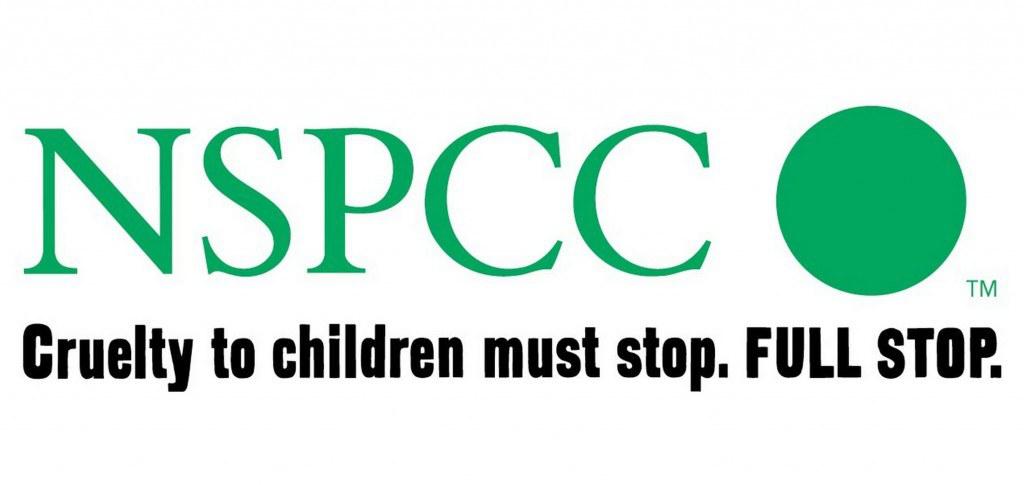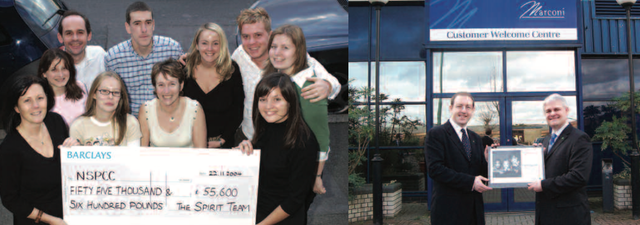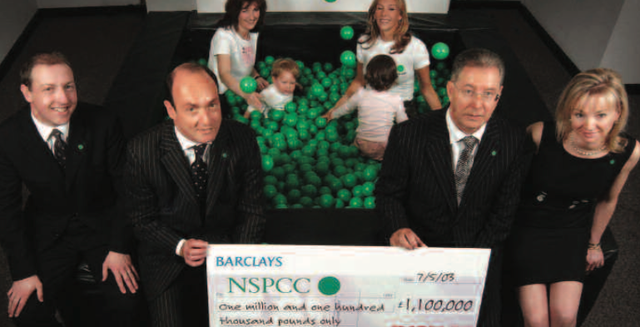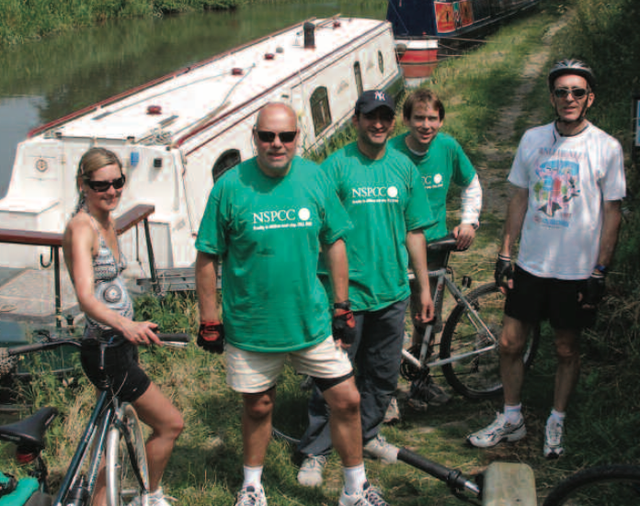NSPCC’s Full Stop campaign — a fundraising triumph. Part five: recognition and consolidation
To consolidate the success of the NSPCC Full Stop appeal, donor recognition was a crucial factor in building on earlier triumphs.
- Written by
- Giles Pegram CBE
- Added
- February 22, 2018

Recognition

We tried to be donor focused. Recognition was important.
I have been told that donors should not be given special treatment according to the size of their gift. I have thought about this, and I disagree. Each donor should be treated with equal importance, so the ‘widow’s mite’ should be as valued as the billionaire’s £1,000,000 gift.
But recognition is different.You will read below how we recognised £100,000+ contributors. It was appropriate, proper stewardship, which enhanced their long-term support. For a £20-a-month donor, this would not just have been inappropriate, but would have made the donor feel uncomfortable. Much as we would like, ideologically, to ignore it, fundraising is not democratic.
We had a certificate of thanks that could be given to anyone who had done something special, no matter how much they had raised. The fundraiser would decide. It was an old-fashioned certificate, with the Society’s seal embossed.
Anyone who gave more than £2,000 was asked if they would like to become a member of the Society’s council, its ultimate governing body. Similarly, they would be given a certificate, and a specially produced badge. Their name would be put on our AGM agenda.
Those who gave more than £10,000 were asked if they would like to be life patrons, which also entitled them to be members of the Council. The names of life patrons were printed in the annual report .
All the above three already existed, and were delivered impeccably.
We created a new recognition device. Anyone who contributed, or raised, more than £100k become eligible to become a patron of the Full Stop appeal. This was very special, and warrants some detail.
Our Full Stop appeal contribution table predicated that we would find 136 donors who would give £100,000+. (In fact, there were far more than 136. £100,000 was a very popular gift level.) We worked hard to create a really special recognition programme for them.
They were given a certificate, and a gold-rimmed green Full Stop badge. But the most important element was that we invited all patrons to an annual get-together. We would spend quality time finding a good venue, such as the Locarno Suite at the Foreign Office, in Whitehall, in London’s West End. It wasn't open to the public, but made available to us because we were a charity with good connections. Time would be given for mingling then everyone was ushered into a smaller room, theatre style, where new patrons were introduced, and after we read a brief citation of how they had contributed £100,000 or more, (completing a sponsored event, organising a corporate partnership, making a gift), were given their certificate and badge in front of an audience of their peers.
We were worried that existing patrons would be bored. We couldn’t have been more wrong. Existing patrons loved to see others join their ‘club’, which is what they became. A club of people, who had made a really significant financial contribution, meeting each other once a year and enjoying each other’s company.
When added together, as a single group, they had raised £70m since launch.
Donors above £1m received all the benefits of £100k donors, including the event. In addition, each received a special package of recognition, appropriate to them as an individual, their desire for public recognition or their desire for more private generosity.
I remember that, in one case, a meeting was set up with a billionaire donor of £1m. Unexpectedly, a group of children were ushered, one by one, into his office. The billionaire was presented with a montage of photographs, letters written by children, drawings by children and a big 'thank you John' in the middle. The billionaire cried at this point. He was gob-smacked. He didn’t know what to say. He had reached the pinnacle of Maslow’s hierarchy of needs: self-actualisation. He would die feeling his contribution to ending cruelty to children was as important as his business empire.
Early in 2007, we held a reception at St. James’s Palace and invited all the volunteers who had made a significant contribution to making the appeal a success. No prospects; nobody to be engaged, no work to be done, just friends. Just people who had worked hard. The buzz around the rooms was a decibel level up. They all had in common one thing: they had made £274,000,000 possible. They were as high as kites. We had secured all the rooms and about five hundred people attended and had the opportunity of meeting the Queen, the Duke of Edinburgh and the Duke of York.
We could have asked the Queen to attend a very special fundraising event for the highest prospects but in fact we asked Her Majesty to say ‘thank you’ to volunteer fundraisers. I am proud of that
Recognition is not just plaques and named buildings.
Consolidation

The Full Stop Appeal was not just about raising £250,000,000, although that was quite a deal. It was about gaining new donors, and new volunteers. About transforming NSPCC’s fundraising and so transforming what the NSPCC could do for children.
At a practical level, we needed to put consolidation into context. We needed to look at how we performed against the contribution table.
We had predicated nine contributions of £5m and above. In fact, there was one contribution of £30m, another of £15m and three others at £5m. Five in total. At this level, we had failed.
However, what was extraordinary was that we had predicated 15 gifts at £1m, and actually achieved 36. We had also predicated 136 gifts at £100k and, again, had achieved considerably more than that. There did seem to be something about a social services charity that did not attract the really huge gifts that are given to the arts and education institutions. Yet a great many, who had not given at that level before, gave stretch gifts of £100k and £1m. This is important.
After the appeal, it is not, I suspect, unusual that about a third of the volunteers wanted to retire, having done what was asked of them. We were probably happy to say goodbye to a third. The remaining third became members of an on-going development board, sub-committees meeting on a regular basis, or part of an enhanced local branch structure, building on all the volunteers gleaned from the appeal, who would continue to raise money from significant donors, companies etc.

So, how did we consolidate?
- Volunteers
- We consolidated our Full Stop regional committees into our on-going structure. We had achieved far-reaching support into local people; wealth, individuals, companies and institutions. The regional volunteers enjoyed being integrated with our on-going branch structure (over 200 branches). Members of the branches were long-serving, very committed, and welcomed the support of new volunteers and donors, many of them giving, and opening doors, at a higher level than previously. The NSPCC’s branch and district volunteer structure saw a significant increase in membership
- At a national level we had put in place new volunteer leadership committees to raise money for specific projects, For example, the ‘helpline board’ continued, raising money for a specific service, not just our core work.
- We consolidated our corporate sub-committee into an on-going ‘corporate development board’, both consolidating the relationships built during Full Stop into on-going support, and, getting our new supporters to create introductions to even newer supporters
- And finally, we had an over-arching board bringing all our volunteer-led fundraising together, with representatives of the various national boards, and involving the branches. They had a co-ordinating role, and also drove volunteer led fundraising into new areas. They also did their own fundraising, from philanthropists, the sporting world etc., raising money from major donors and others.
- Donors
- The most important thing here was good stewardship. Rather than have several departments doing the same things in parallel, we created a stewardship unit, managed at a senior level. The staff in that unit talked to the donor-facing departments about their needs, and responded to them creatively, gathering case studies and other information about our work, and writing this up in donor friendly language. Also, for example, they produced a little book which looked, genuinely, as if it had been individually prepared. Not inexpensive, but worth it, from the reaction from donors. They were not donor facing, but they were totally in touch with what donors thought and felt. Much of what they produced was truly excellent, imaginative and inspirational. It could be used with all types of supporter and most of it was very inexpensive.
- In the stewardship team, we set up an innovation unit.
- At an individual level, for example, someone had contributed to finance a project for three years. We stewarded them and gave them updates. We invited them to visit the project. Towards the end of the three years, we started the process of asking them to give for another three years. I don’t think this is anything new.
- Investment in fundraising
- Again, the trustees had the foresight to invest in consolidating those parts of the appeal that had proved successful.
- Since the centenary, the fundraising sector had ‘discovered’ regular giving as a core source of income from people giving £2, £5 or £10 a month.
We knew that, with the high awareness of the NSPCC, this was the obvious time to invest heavily in the recruitment of regular givers. The trustees, the treasurer, (now Jonathan Bloomer, CEO at the Prudential), and the finance committee, had considered that proposed spend carefully, and agreed it as a proper investment. By 2009, income from regular givers had increased to £85,000,000 p.a., nearly half the NSPCC’s total voluntary income, including legacies.
- Staff
- Again, new staff, inducted into a donor focused way of thinking
- And again, new ways of working. Staff working across departmental boundaries to create the best experience for donors and volunteers who didn’t recognise those boundaries
- But most significant was ‘donor+’. Many of us had read Ken Burnett’s book Relationship Fundraising, and wanted to start to make the ideas in the book become real. But, before Full Stop, the cultural changes that would be needed seemed just too great. Full Stop changed that. I have written about the need for the change in culture for fundraising staff, and how much effort we put into that. We spent serious time on changing from an ‘organisation led’ to a ‘volunteer/donor led’ approach. So we built on that. Without going into too much detail, we created an initiative, ‘donor+’, with six ‘donor+’ principles, which we spent considerable time embedding into the appeals function. It wasn’t Relationship Fundraising made real, but it was a good start.
- We had staffed up for the appeal, and we didn’t pretend we needed all those staff post-appeal. Some were on contracts, which came to an end. Some reduction in staff numbers took place through natural wastage. No-one was made redundant.
But could we have done more? I think so. We were all tired and so spent time recovering. To be fair, we had given donors a good experience, but in the short term. On reflection, I believe we allowed too many donors to slip away, feeling they had done their bit. As I said in the preface, we thought we were clever. We had a consolidation plan for the appeal but we had not thought through enough how we could turn the short term attraction into long term support from each individual. We had given time to it, and resource but we might have done more. We had not devoted enough resource to it. And so we had not, in all cases, engaged donors enough in our long term aspiration to end cruelty to children. I am being quite harsh.
In the final section, I explore what actually happened after the Appeal.
Giles vividly highlights the challenges faced by an organisation after such a monumental campaign, perhaps especially because the appeal raised so much money from so many donors. By maintaining a focus on the donors' experiences, the NSPCC was able to consolidate a lot of the success of the Full Stop appeal to build for the future.


















